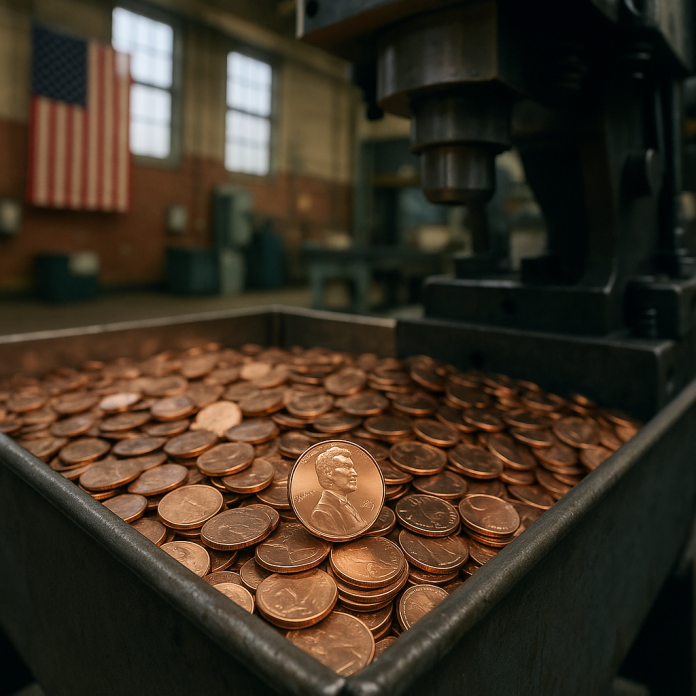
For the first time in more than two centuries, the rhythmic clatter of penny presses has fallen silent at the U.S. Mint in Philadelphia. On November 12, the nation produced its final one cent coin, ending a tradition that began in 1793 and helped shape daily commerce, cultural sayings, and the pocket change of generations. What began as a staple of early American life, when a single cent could buy a biscuit or a candle, gradually became a coin with little buying power and a rising production cost.
The end of the penny follows President Donald Trump’s directive earlier this year to halt its production in the name of budget efficiency. His argument was straightforward: each penny cost about 3.7 cents to make in fiscal year 2024, while each nickel cost roughly 13.8 cents. Despite the penny’s low face value, its creation was draining millions of federal dollars. The Treasury estimates that taxpayers will save about 56 million dollars annually as a result of the change.
Still, the decision triggered ripple effects almost immediately. Some retailers began running low on pennies even before the final press, prompting a mix of creative responses. Stores rounded transactions to the nearest five cents, requested that customers bring exact change, or even offered small rewards in exchange for jars of coins from shoppers’ homes. Banks rationed their remaining supplies. Many business owners complained that the transition arrived without any clear federal guidance.
Despite these challenges, the penny will remain legal tender. The Treasury points out that roughly 250 to 300 billion pennies are already in circulation, far more than required for routine commerce. Though new ones will no longer be minted, the existing supply is expected to last for decades. Over time, the coin will gradually fade from cash drawers as pieces wear out or disappear into household jars, couch cushions, and children’s collections.
Inside the Mint, the atmosphere during the final run was a blend of pride and melancholy. Workers who had spent years tending presses gathered to watch the last batch emerge. Some applauded; others reflected quietly. Clayton Crotty, a 15 year mint veteran, summed up the mood: “It’s an emotional day. But it’s not unexpected.”
The penny’s long evolution mirrors America’s own story. Early designs included Benjamin Franklin’s sundial motif, the Flowing Hair cent, the Flying Eagle cent, and the Indian Head cent. In 1909, Abraham Lincoln’s profile appeared, becoming one of the most familiar images in U.S. currency. These design shifts captured changing artistic styles, national ideals, and political values. Frank Holt, a historian of coins, described pennies as miniature records of the country’s shifting identity, objects that carried images, mottoes, and symbolic choices into everyday life.
Although the coin’s purchasing power has evaporated, its place in American culture endures. Expressions like “pennies from heaven” or “pinch pennies” remain common. Many still view the coin as a token of luck or nostalgia. The end of production marks a farewell to an object woven into daily routines for generations, once carried, saved, lost, collected, and now left to history as the nation quietly rounds its change.
This image is the property of The New Dispatch LLC and is not licenseable for external use without explicit written permission.